This article provides a comprehensive guide to leveraging HARO for link building, along with practical tips for success.
HARO (Help a Reporter Out) is a powerful tool for securing free backlinks from authoritative media outlets, significantly boosting your SEO strategy.
The concept is simple: journalists seek expert insights, and as a specialist, you can provide detailed responses to earn mentions with links to your website.
The key is to offer genuinely valuable insights, not just insert links. When done right, HARO becomes one of the most effective sources of high-quality backlinks.
May the force be with you (if you use HARO)! 🖖
What is HARO and How Does It Work?
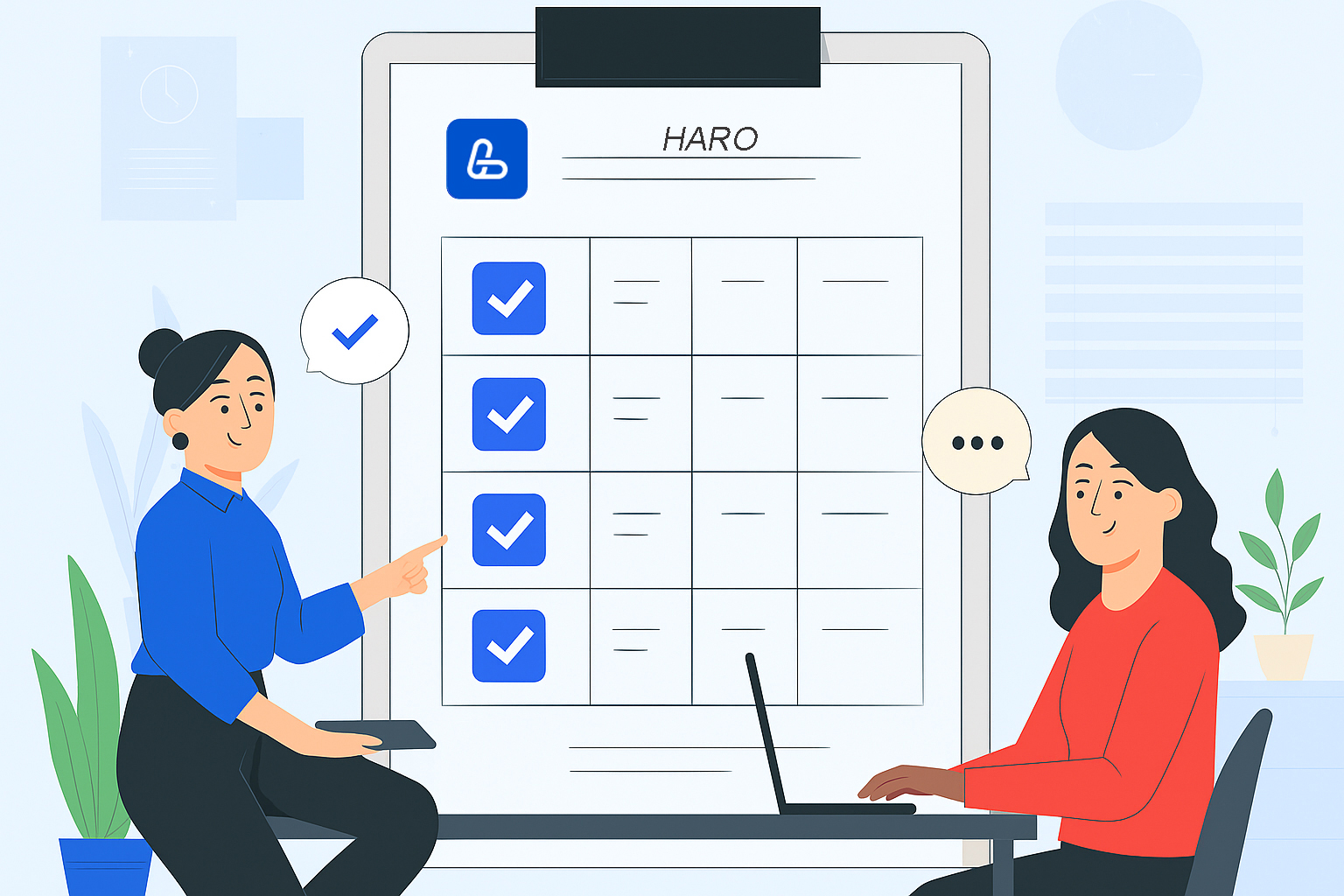
As of 2025, HARO has officially resumed operations after a brief hiatus. Originally designed for journalists, editors, and bloggers to connect with experts for quotes and insights, HARO has become a go-to tool for marketers seeking high-quality backlinks from reputable sources.
Today, HARO is a valuable asset for link building and enhancing brand visibility in search engines.
In recent years, there’s been a surge in SEO agencies offering HARO-based link-building services, often integrating it into standard packages alongside methods like guest posting. This is due to HARO’s proven effectiveness in securing authoritative backlinks, improving search rankings, and building brand trust.
How HARO Works:
The process is straightforward:
- Journalists post queries on HARO.
- Experts select relevant queries and respond.
- If a journalist likes your response, they may include it in their article with a link to your site.
HARO helps journalists access information quickly while enabling experts to boost their visibility and industry authority.
Why Use HARO for Backlinks?
HARO offers backlinks that competitors can’t easily replicate (they may use HARO, but they can’t guarantee the same opportunities). This not only improves search rankings but also enhances brand credibility.
Here are the key benefits of using HARO for link building:
- High-Quality Backlinks from Authoritative Sources
One of HARO’s primary advantages is the ability to secure backlinks from reputable media outlets and platforms. Your responses may appear in articles on major sites like Forbes, Business Insider, and others.
Why It Matters for SEO:
- Domain Authority: Links from high-authority sites boost search engine trust, improving your rankings.
- Link Quality: HARO provides access to high-quality links from sites with strong Domain Authority (DA) and Domain Rating (DR).
- Long-Term Impact: Links from major media outlets remain stable, delivering sustained SEO benefits.
- Enhanced Brand Visibility and Reputation
Mentions in top-tier publications not only provide valuable backlinks but also significantly increase your brand’s visibility and credibility. This strengthens your brand’s reputation and showcases your expertise.
How It Works:
- Media Mentions: Being featured in articles validates your expertise publicly.
- Trust and Authority: Repeated mentions in reputable media build long-term credibility and support content marketing strategies.
- Audience Engagement: Readers of these articles may visit your site, driving additional traffic and potential leads.
- Time Efficiency Compared to Other Link-Building Methods
Compared to traditional link-building tactics like purchasing links or guest posting, HARO saves time while delivering high-quality results. You simply respond to journalists’ queries, requiring less effort than creating content for external platforms.
Advantages Over Other Methods:
- Automation: HARO sends daily query emails, and you can filter them by relevant topics.
- No Content Creation: Unlike guest posts, HARO only requires expert insights, not full articles.
- Cost-Effective: Responding to HARO queries is free, unlike paid link placements.
- Networking Opportunities with Journalists
HARO offers a unique chance to build relationships with journalists and bloggers, potentially leading to recurring mentions. By providing valuable responses, you establish connections that may result in future collaborations.
How It Helps:
- Recurring Queries: Journalists may return to you for future insights, leading to more links.
- Interviews and Features: Some journalists may invite you for interviews or feature you as an expert, increasing visibility.
- Long-Term Relationships: Becoming a trusted source boosts your chances of ongoing media mentions.
- Improved Organic Traffic and Search Rankings
Backlinks from HARO can significantly boost organic traffic. High-quality links from authoritative sites improve search rankings, driving more visitors to your site – especially in competitive niches.
Impact on Traffic:
- Higher Keyword Rankings: Quality HARO links can elevate your site’s position for target keywords.
- Increased Organic Traffic: Improved rankings lead to more organic visitors.
- Better Indexing: Search engines index sites with authoritative links more effectively, enhancing page visibility.
- Ease of Use and Accessibility
HARO’s accessibility and simplicity make it ideal for businesses of all sizes. The platform is free to join, and responding to queries is intuitive, requiring no advanced technical skills.
Benefits for Users:
- Universal Access: Any business, from startups to enterprises, can use HARO to secure quality backlinks.
- User-Friendly Interface: The platform is easy to navigate, making it approachable for beginners.
HARO Membership Types and Access Conditions
HARO offers two account types with specific permissions and limitations:
Journalist Membership
Who Can Join:
- Journalists
- Bloggers
- Content creators (podcasters, media experts, etc.)
Registration Conditions:
- Submit an expert query via the platform.
- Queries must comply with HARO’s rules.
Key Notes:
- The administration may reject queries without explanation.
- Requesting payment for expert opinions is prohibited.
Source Membership
Who Can Join:
- Industry experts
- Company representatives
- PR specialists
Registration Conditions:
- Complete an application on HelpAReporter.com.
- Access to queries is granted post-approval (free version includes 3 daily emails).
Features:
- Sources can respond to journalist queries but cannot post their own.
Key Rule:
HARO may restrict access for policy violations, with decisions being final.
For optimal results, review HARO’s guidelines and prepare high-quality response templates in advance.
How to Register for HARO
For Journalists:
- Visit the journalist section and submit a query.
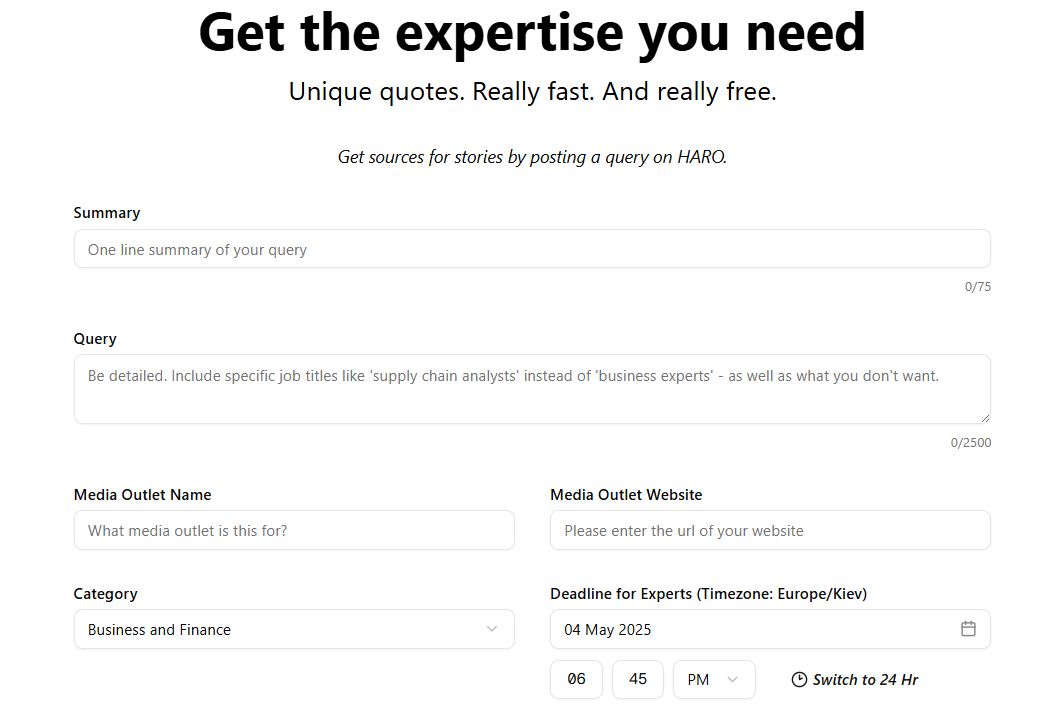
- Queries are assigned an anonymous email (
@helpareporter.net).
For Experts (Sources):
- Visit helpareporter.com.
- Create an account by providing your email.
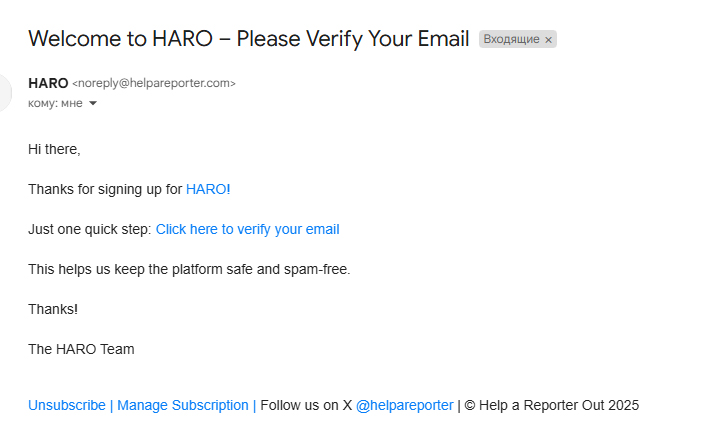
- Confirm your email via the activation link sent to your inbox.
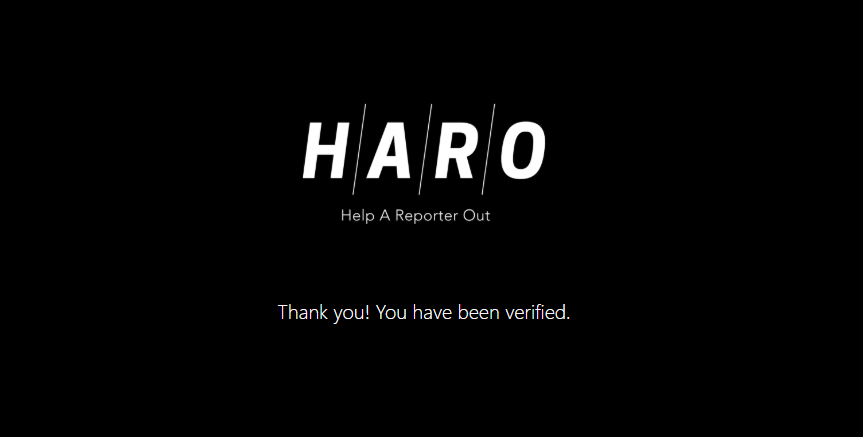
- Receive 3 daily query emails.

- Respond only to queries directly relevant to your expertise. Using data for other purposes is prohibited.
HARO Rules
- Response Guidelines:
- Provide complete, relevant answers with a brief bio.
- Avoid:
- Off-topic responses.
- Product promotion (unless requested).
- Attachments (use Dropbox/Google Drive links instead).
- Confidentiality:
- Do not collect journalists’ data.
- Treat anonymous queries (“Large Outlet”) with equal care.
- Ethics:
- Avoid forwarding queries to clients with generic responses.
- Be respectful and professional.
Important: HARO does not encrypt data or verify user identities. Proceed at your own risk.
How to Select the Right HARO Queries for Quality Backlinks
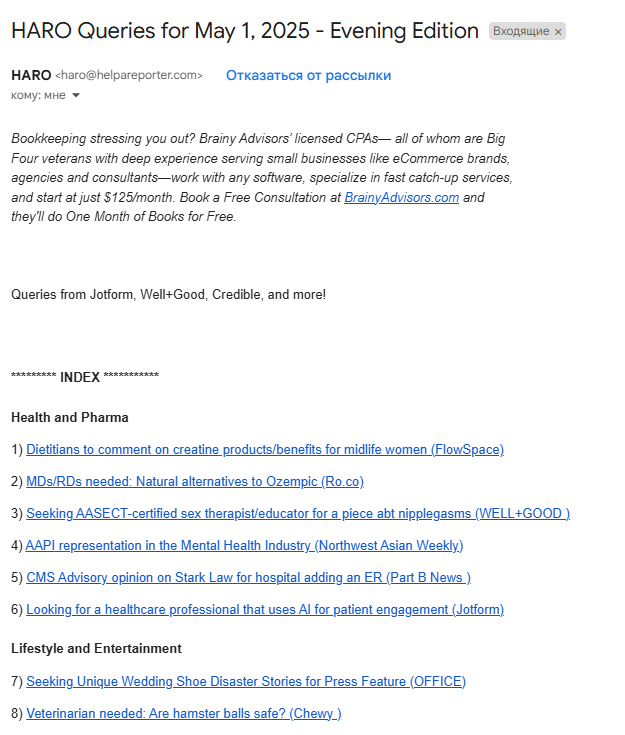
Identifying Relevant Queries:
Not all HARO queries are equally valuable for link building. Focus on those matching your expertise and offering value.
Choosing High-Potential Queries:
Target queries from major media outlets or those tied to significant events relevant to your experience. The more reputable the outlet, the better the link quality.
Working with Niche Queries:
Niche queries can be highly effective, especially for specialized websites. Responding to these builds links from relevant sources and attracts targeted audiences.
How to Craft a HARO Response to Secure a Backlink
- What Journalists Want:
Informative, original, and concise responses.
- Showcasing Expertise:
Include specific examples, research, or data to highlight your experience.
- Adding Links Naturally:
Avoid over-inserting links. Integrate them contextually, e.g., referencing your company as an example.
- Using Examples and Data:
Incorporate statistics or research to add value and increase the likelihood of inclusion.
Example Response for an SEO Query for E-Commerce Stores
Query Topic: “Need an SEO expert to explain how to boost organic traffic for an online store in 3 months”
Your Response:
Hi [Journalist’s Name],
I’m [Your Name], SEO Director at [Your Company]. We specialize in e-commerce growth, helping 20+ stores increase traffic by 50-300% in the past year. I’d love to share actionable tips for your article.
Key Steps for Rapid Traffic Growth:
- Fix Technical Issues: 70% of stores lose traffic due to duplicate pages, slow loading (<2 sec, per Google), or poor mobile optimization. Tools like Screaming Frog and PageSpeed Insights can identify issues in an hour.
- Optimize Categories: Add unique 300+ word descriptions with LSI keywords (e.g., for “buy sneakers”: “running,” “orthopedic,” “men’s”). This boosts visibility by 30% within a month.
- Launch Content Marketing: Our case study: a home goods store grew traffic 120% by publishing guides like “How to Choose a Blanket: Materials, Sizes, Care” with internal product links.
Pro Tip: Focus on low-frequency keywords (e.g., “buy leather backpack in Prague” vs. “backpack”) for targeted traffic and faster rankings.
Happy to provide more details or case studies. Check out our free e-commerce SEO checklist at [YourSite.com].
Best,
[Your Name]
[Position] | [Company]
[Phone] | [Website]
Why It Works:
- Expertise: Specific metrics, tools, and case studies.
- Practicality: Clear, actionable steps.
- Trust: Offers a free resource without being pushy.
Tip: Include 1-2 unique insights (e.g., “Google ranks product pages with video 53% higher”) to boost citation chances.
Strategies for Successful HARO Link Building
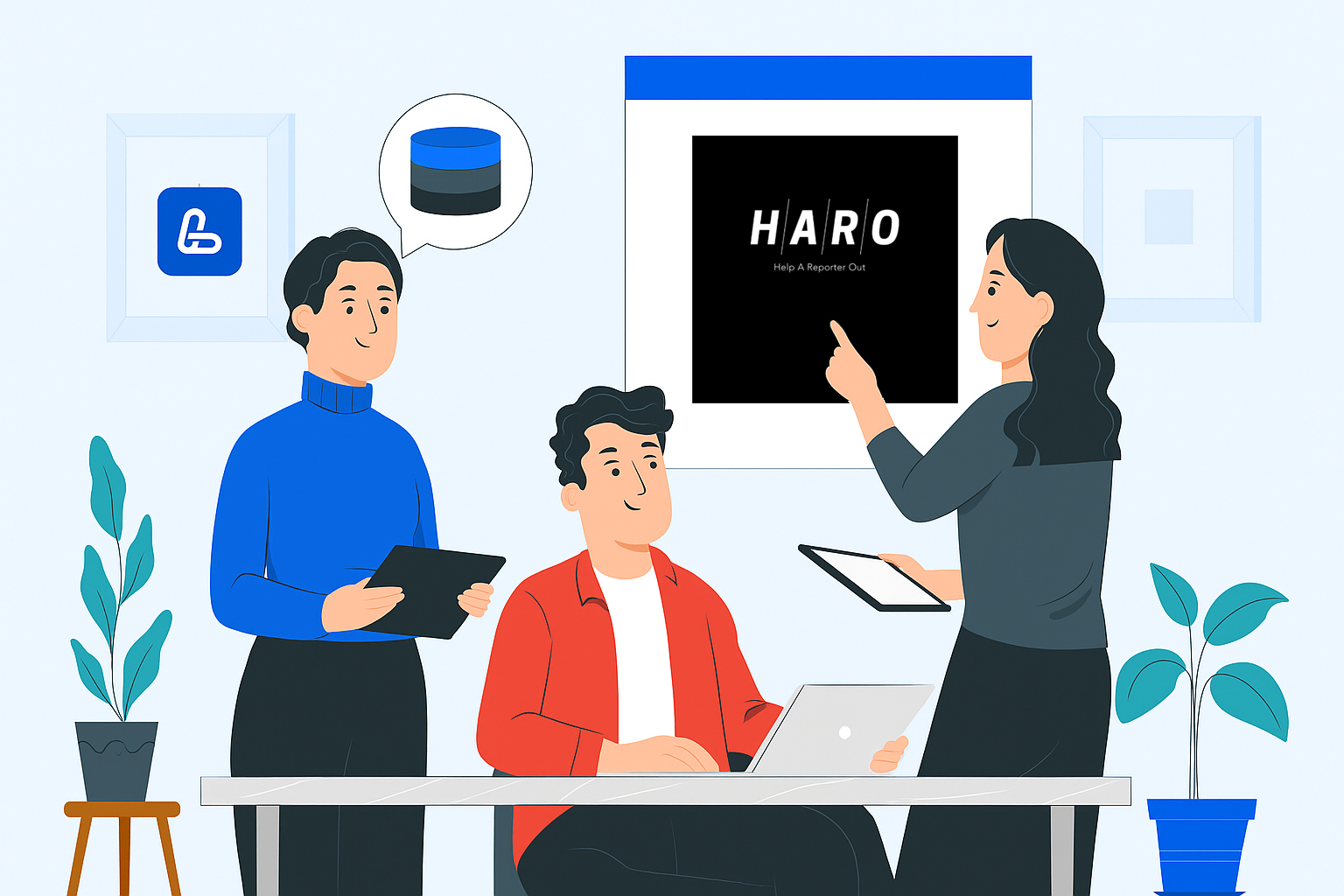
To make your HARO responses stand out in a sea of pitches, you need to put in the effort and craft your content strategically. Beyond the basics, here are several advanced strategies to make your responses more noticeable, valuable, and compelling:
- Be Concise and Get to the Point. Start your response with exactly what the journalist needs. Avoid lengthy introductions or irrelevant details that could dilute your message. Respect the journalist’s time by diving straight into the core of their query.
- Be Clear and Precise with Your Data. Journalists value specificity and accuracy. When citing statistics, facts, or studies, ensure they’re current and verified. Providing precise numbers or links to credible research can significantly boost the value of your response.
- Personalize for the Journalist’s Query. Tailor your response to the specific request. If the query mentions particular details or current events, weave those into your answer. Personalized pitches show you’ve carefully read the query and crafted a response aligned with the journalist’s needs.
- Structure Your Response. Make your pitch easy to digest. Begin with a clear, concise answer to the question, followed by supporting context or explanation, and wrap up with a brief takeaway or key insight. This structure ensures clarity and enhances the response’s value.
- Use Strong Headlines and Subject Lines. Headlines aren’t just for blogs – they work in HARO responses too. A clear, concise subject line or subheading can make your pitch pop and help the journalist quickly grasp your key point.
- Incorporate Hyperlinks Sparingly and Strategically. If a link to your site adds value and fits the query’s context, include it. However, ensure it feels natural and helpful, not promotional. Links should enhance your response, not dominate it.
- Offer Further Collaboration. End your response by expressing willingness to answer additional questions or provide clarification. This shows your commitment and increases the likelihood of building long-term relationships with journalists.
- Get Creative. Offer unique ideas or fresh perspectives to stand out. Journalists seek novel concepts, and a response with an innovative angle or solution will carry more weight.
- Continuously Hone Your Pitching Skills. HARO isn’t a one-and-done tactic. To excel in link building, keep refining your response skills. Study successful pitches from other experts, analyze what works, and iterate on your approach.
- Leverage Personal Experience. The more you draw from your own expertise, the more credible your response. Real-world examples and proven insights are far more persuasive than generic facts, adding authenticity and depth.
- Understand the Journalist’s Audience. Knowing the target audience for the article can help you tailor your response. Some journalists write for broad readers, others for niche professionals. Aligning your answer with the audience’s needs makes it more relevant and impactful.
- Maintain a Professional Tone. Your response should be friendly yet polished and professional. A well-crafted tone increases the chances of your pitch being selected and used in the article.
- Stay Consistent and Disciplined. To become a go-to source for journalists, engage with HARO regularly. Sporadic or off-topic responses can hurt your reputation as a reliable expert.
These strategies can help you secure high-quality backlinks through HARO. Success hinges on approaching each query with professionalism and precision, allowing you to stand out, deliver unique value, and foster lasting connections with journalists.
Common HARO Mistakes (and How to Avoid Them)
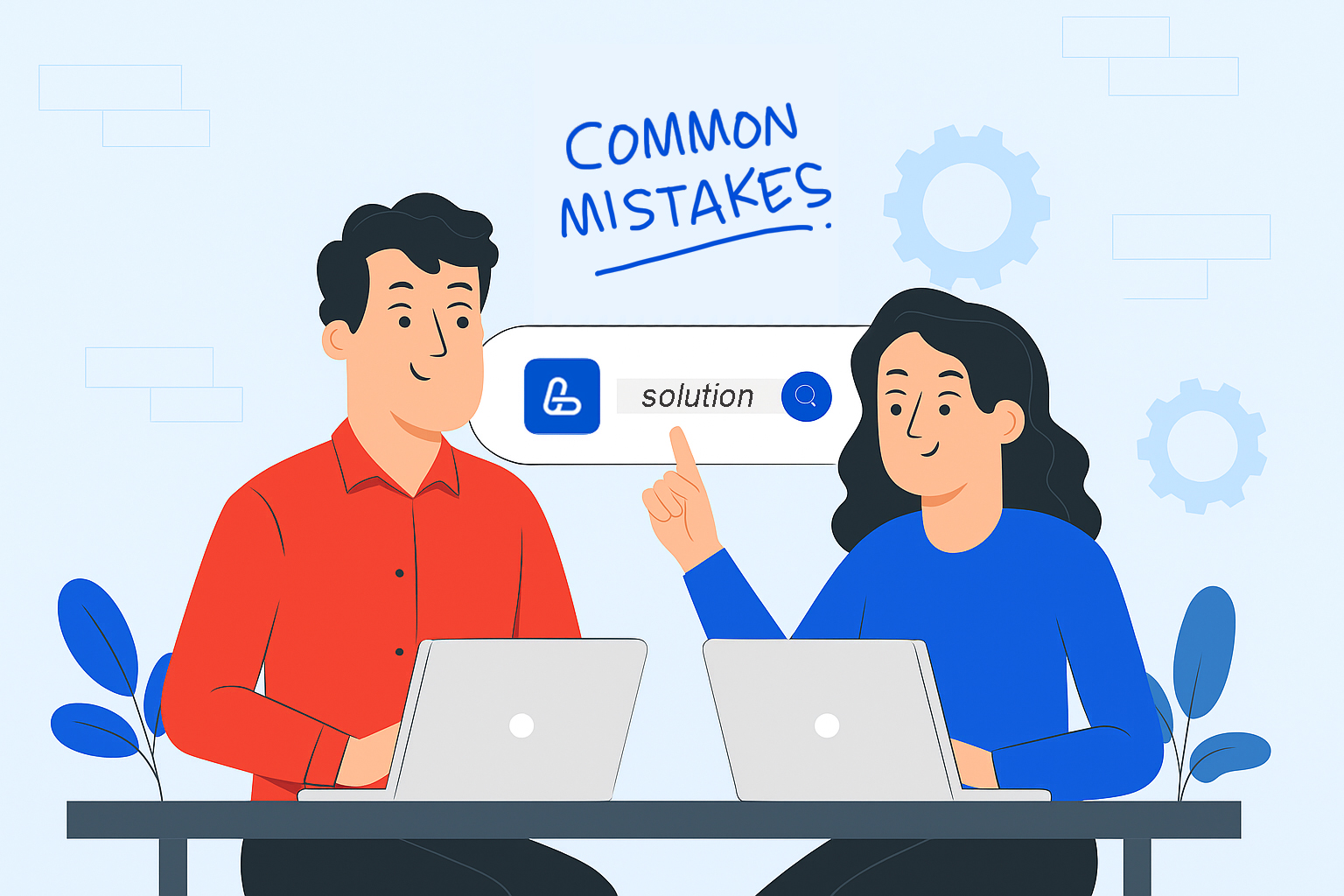
HARO offers a powerful opportunity to earn high-quality backlinks and boost your site’s authority, but many users make avoidable mistakes that undermine their efforts. Understanding these pitfalls and how to sidestep them will improve your chances of successful journalist collaborations.
Here are the most common HARO mistakes:
- Missing Deadlines. Journalists work on tight schedules. Don’t wait until the last minute to respond, or you’ll miss your shot.
Fix: Prioritize speed and aim to reply within hours of receiving a query. - Overly Long, Unfocused Pitches. Lengthy pitches covering too many points often lack focus and overwhelm journalists who value brevity.
Fix: Keep responses concise, addressing the query directly with clear, relevant insights. - Sending Spammy or Irrelevant Responses. Responding to every query, regardless of relevance, wastes time and annoys journalists.
Fix: Only pitch queries that align with your expertise or niche. - Pitching on Behalf of Clients. Responses posing as clients or overly promotional messages often fail. Journalists prefer authentic expertise over brand plugs.
Fix: Highlight your personal expertise while subtly mentioning your company or project. - Lack of Originality. Generic or templated responses blend into the crowd.
Fix: Offer a unique perspective or insight that grabs the journalist’s attention. - No Supporting Evidence. Responses without data, case studies, or social proof may seem less credible.
Fix: Back up your claims with stats, research, or real-world examples. - Overloading with Links. Too many links to your site can come off as spammy.
Fix: Use one relevant, value-adding link, if any, and keep it contextual. - Generic Information. Responses that restate common knowledge lack impact.
Fix: Share fresh, actionable insights that journalists can’t find elsewhere.
How to Boost Your Chances of Earning Quality HARO Links

To maximize HARO for link building, focus on key factors that drive success. Here are proven principles to increase your effectiveness:
- Respond Fast – Speed Is Critical. The quicker you reply, the better your odds of being noticed. Journalists often receive dozens or hundreds of responses, so late pitches get buried. Aim to respond within hours of a query hitting your inbox.
- Offer Specific, Actionable Advice. Journalists crave valuable, practical insights. Instead of vague tips like “stay on top of trends,” share specific tools, strategies, or methods backed by your experience. Unique, actionable advice sets you apart.
- Stick to Relevant Queries. Only respond to requests matching your expertise or niche. For example, if you’re in digital marketing, focus on marketing, business, or advertising queries to ensure relevance and boost link quality.
- Be Open to Follow-Ups. Show you’re available for further questions or clarification. This builds trust and positions you as a reliable source for future collaborations.
Why We’re the Top HARO Link Building Agency

Skip the hassle of monitoring queries and crafting pitches. Trust the pros at LinkBuilder.com to secure high-quality HARO links from authoritative sites.
What You Get:
- Expert HARO monitoring
- Turnkey, professional responses
- Full-cycle journalist management
- Guaranteed placements on high-authority platforms
- 100% Google-compliant organic mentions in relevant contexts
We work on a project for ~3 months. You fund your account with $3,000, and we deduct fees based on placements:
- $450: Mention with backlink from DR > 50 site
- $225: Mention with backlink from DR 30–50 site
- $75: Mention with backlink from DR < 30 site
- $225: Mention on top-tier sites (per Ahrefs or major news outlets) without a backlink
Our Process:
Month 1: Setup and Prep
- Analyze your expertise to identify high-impact topics.
- Develop 5–7 tailored response templates with your unique insights.
- Select optimal HARO query categories for your niche.
Month 2: Active Pitching and Early Wins
- Daily query monitoring (3 HARO emails at 5:35 AM, 12:35 PM, 5:35 PM EST).
- Send 3–5 high-quality responses weekly, targeting relevant queries.
- Expect 1–2 media mentions, potentially with links.
Month 3: Optimization and Scaling
- Analyze which responses and topics drive the most placements.
- Refine templates based on journalist feedback.
- Ramp up to 7–10 responses weekly if results are strong.
What You Need to Start:
- Expert Info
- Your niche (e.g., SaaS, marketing, healthcare, finance)
- 3–5 key talking points or ideas you can expand on
- Expert bio (role, achievements, experience for credibility)
- Brand Details
- Website/blog (for links and mentions)
- Target pages (URLs to promote)
- Preferred media outlets (if any)
- Optional Tools
- Access to expert data (if responses come from your team)
- Supporting Materials
- Case studies or research (to strengthen responses)
- Expert headshots (for articles requiring images)
HARO isn’t a quick win, but with a systematic approach, it’s a powerful tool for quality links and PR. LinkBuilder.com saves you up to 20 hours monthly and eliminates the risks of DIY outreach. Don’t miss your chance to land in top-tier media – trust the experts!
Evaluating HARO’s Effectiveness for Link Building
HARO is a go-to tool for link building, offering access to high-quality backlinks from authoritative media. However, participation alone doesn’t guarantee results. To gauge your HARO strategy’s success, you need to track the right metrics and assess outcomes effectively.
Key Metrics for Measuring HARO Success
To evaluate your HARO link-building campaign, monitor these core indicators:
- Number of Backlinks. Track how many backlinks you secure through HARO.
How to Track: Use tools like Google Search Console, Ahrefs, Semrush, or Moz to monitor new links and confirm which responses led to placements. Focus on both quantity and quality (high-DA sites). - Link Quality (Domain Authority, Trust Flow). Links from authoritative sites carry more SEO weight.
How to Track: Check metrics like Domain Authority (DA) or Trust Flow via Ahrefs, Moz, or Majestic to assess the value of linking domains. - Referral Traffic and Conversions. Measure how much traffic your HARO links drive and whether it converts.
How to Track: In Google Analytics, filter traffic from HARO-linked domains under “Source/Channel” and track conversions (e.g., sign-ups, purchases, inquiries). - SERP Position Changes. Monitor how HARO links impact your rankings for targeted keywords.
How to Track: Use Semrush, Ahrefs, or Google Search Console to track ranking improvements for keywords tied to your HARO responses.
Long-Term Impact Assessment
HARO results often take time to materialize. Links may influence SEO weeks or months later, so consider long-term trends:
- Increased Site Authority. Quality HARO links can boost your site’s Domain Authority (DA), enhancing trust and rankings across all pages.
How to Track: Monitor DA growth over time using Moz, Ahrefs, or Majestic. - Lead and Audience Growth. Media mentions can attract subscribers, clients, or fans beyond SEO benefits.
How to Track: Use Google Analytics to analyze traffic spikes and engagement from HARO-linked pages.
Engagement and Journalist Feedback
Beyond links, assess how journalists respond to your pitches:
- Response-to-Publication Rate. Track how many of your pitches lead to published mentions. Regular placements signal you’re delivering value.
How to Track: Maintain a spreadsheet of sent pitches and resulting publications. - Journalist Relationships. Repeated interactions with journalists can lead to ongoing opportunities.
How to Track: Build a contact list of journalists you’ve worked with to nurture long-term connections.
Effective HARO evaluation requires a holistic approach – tracking link volume, quality, traffic, rankings, and long-term authority gains. Combine HARO with other SEO strategies and continuously analyze data to maximize your site’s visibility and search performance.
Why HARO Link Building Isn’t a Quick Fix
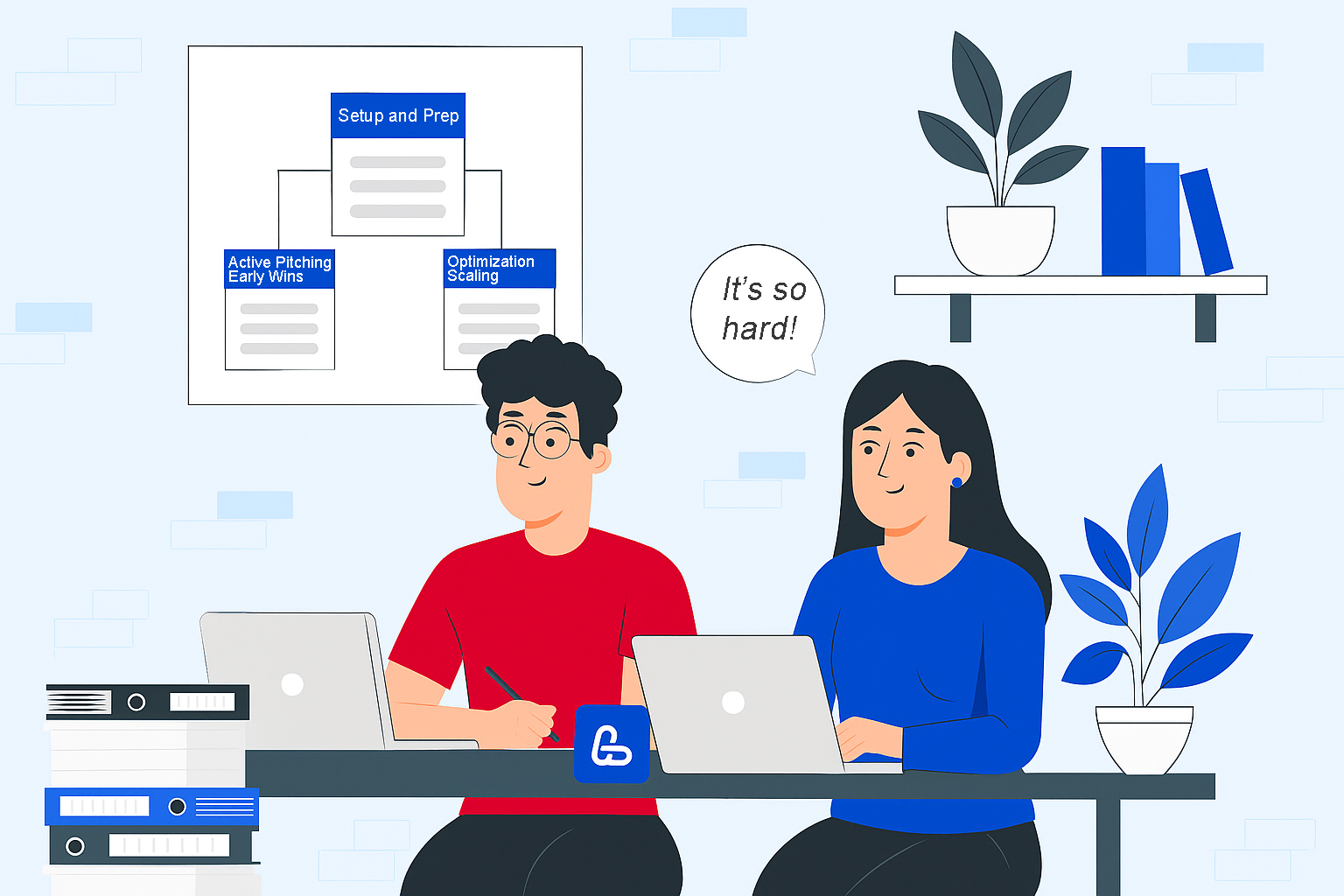
HARO may seem like an easy way to boost SEO, but it comes with challenges that demand time and expertise:
- The Myth of Simplicity and Templated Responses. Many assume HARO is a low-effort link source, blasting AI-generated pitches. Journalists spot these generic responses instantly, as their inboxes overflow with near-identical messages. As B2B SaaS marketer Anna Sonnenberg notes, “To stand out, you need personalized responses with real expertise, which takes time and deep topic knowledge.”
- Media Trust Issues. Journalists use HARO for expert insights, not link placements. Flooding them with irrelevant pitches has tainted the platform, making reporters wary of spammy responses and lowering the odds for even quality pitches.
- Limited Control Over Outcomes.
- No Targeting: Links often point to homepages, not SEO-optimized pages.
- Low-Quality Risk: A journalist may represent a low-traffic blog disguised as a top outlet.
- Unpredictability: Even stellar responses may not get published – editors have the final say.
- SEO Risks from Irrelevant Links. Links from off-topic sites can raise red flags with Google, which penalizes unnatural link profiles. Over-relying on HARO could harm your rankings.
- Scalability Challenges. To stay compliant, you must stick to niche-relevant queries, which limits opportunities:
- Only 1–2 relevant queries weekly for most niches.
- <10% conversion to links.
- High effort: Each response takes 30–60 minutes of expert time.
HARO complements link building but doesn’t replace:
- Guest Posts: Control over anchors and domains.
- Digital PR: Creating newsworthy content to attract journalists.
- Crowd Marketing: Engaging in niche discussions with brand mentions.
HARO shines with deep expertise and selective pitching. For rapid link growth, a broader strategy is essential.
10 HARO Alternatives
With HARO’s temporary shift to Connectively (Dec 2023–Apr 2025), exploring alternatives is critical for effective link building. Here are 10 top platforms to secure quality backlinks:
- Qwoted
A modern platform connecting experts with journalists, ideal for landing in Forbes, Business Insider, and TechCrunch.
Features: Sleek interface, Slack/Telegram query delivery, top-tier media access.
Price: Free (PRO version available).
Link: qwoted.com
- SourceBottle
Perfect for brands in Australia, USA, and UK, especially in beauty, health, and lifestyle niches. Sends 2 daily query emails.
Features: Strong in lifestyle niches, frequent updates.
Price: Free.
Link: sourcebottle.com
- JustReachOut
Find and pitch journalists from a 700K+ contact database. Great for SEO pros and startups seeking control.
Features: Direct journalist outreach, massive media database.
Price: From $99/month.
Link: justreachout.io
- Help a B2B Writer
Focuses on business niches like marketing, IT, finance, and SaaS, with less spam than HARO.
Features: Business-specific queries, high relevance.
Price: Free.
Link: helpab2bwriter.com
- Terkel
Turns your responses into full articles for Forbes, Entrepreneur, and more, ensuring quality mentions.
Features: High-quality queries, article-ready responses.
Price: Free (requires moderation).
Link: terkel.io
- Featured (formerly “HARO for Podcasts”)
Connects experts with podcast hosts for dofollow links in show notes.
Features: Podcast-focused, direct host contacts.
Price: Free.
Link: featured.com
- Pressfarm
Offers a journalist database and press release tools, guaranteeing placements for startups and growing brands.
Features: Media contacts, press release creation.
Price: From $99/month.
Link: pressfarm.com
- Muck Rack
A premium PR platform for finding journalists and tracking mentions, ideal for agencies.
Features: Niche-specific journalist search, brand monitoring.
Price: From $200/month.
Link: muckrack.com
- Prowly
Automates PR tasks like press release distribution and media monitoring, suited for corporate clients.
Features: Media database, CRM integration.
Price: From $259/month.
Link: prowly.com
- #JournoRequest on Twitter
Journalists post queries with this hashtag, allowing direct responses.
Features: Free, real-time journalist access.
Price: Free.
Link: Twitter hashtag #JournoRequest
Conclusion
HARO bridges your expertise with journalism. Each response is a chance to establish yourself as an expert, share unique insights, and build brand trust. Success requires strategy, patience, and continuous improvement.
HARO helps you stand out from competitors and forge lasting media relationships. It’s not just a tactic – it’s an investment in your reputation and authority.
Ready to start? Create your HARO profile, select relevant queries, and begin responding. Every quality response is a step toward a backlink and establishing yourself as a thought leader.
Additional Resources
To maximize HARO’s effectiveness for link building and SEO, explore these valuable tools and resources.
Useful Tools for HARO
- Query Monitoring and Filtering Tools
- HARO-to-Slack/Email (Zapier, Make): Automates query delivery to Slack or email to avoid missing relevant opportunities.
- Google Alerts + Keywords: Set alerts for niche-specific queries (e.g., “expert comment on [topic]”) to stay informed.
- Tools for Quick Responses
- TextExpander / MagicText: Response templates with auto-fill for time efficiency.
- Grammarly / Hemingway: Check grammar and readability to ensure polished responses.
- ChatGPT (use cautiously): Helps structure responses, but do not copy AI-generated text – journalists can detect it.
- Journalist and Media Verification
- Muck Rack: Database of journalists, their social media, and past articles.
- SimilarWeb / Ahrefs: Evaluate outlet traffic and authority before responding.
- JournalistTweets: Search reporters’ tweets by keywords.
- Tracking and Analytics
- Notion / Airtable: Log sent responses and track publication status.
- BuzzStream: Monitor contacts and follow-ups for unanswered queries.
- Google Analytics / UTM Tags: Track traffic from HARO-acquired links.
Recommended Reading and Blogs
- Books
- The Ultimate Guide to Link Building (Eric Ward, Garrett French): A classic on natural link building, including media outreach.
- Expert Secrets (Russell Brunson): Strategies for positioning yourself as an expert to attract journalist attention.
- Digital PR (Lily Ray, Amsive Digital): Modern PR strategies, including HARO and alternatives.
- Blogs and Guides
- Backlinko (Brian Dean): “How to Get Featured in the News (And Earn Backlinks)” – HARO breakdown with examples.
- Ahrefs Blog: “How to Use HARO for Link Building” – Tactics for crafting responses.
- Fractl (Kelsey Libert): “How to Pitch Journalists” – Psychology of media outreach.
- BuzzStream Blog: “Digital PR for Link Building” – Case studies on journalist collaboration.
- Podcasts
- Experts on the Wire (Maddy Osman): Episodes on personal branding and media mentions.
- The Digital PR Podcast (Raechel Lambert): Case studies, including HARO strategies.
- Courses
- Coursera: Introduction to Public Relations and Media – Foundations for understanding media queries.
- Udemy: Digital PR & Link Building – Practical templates for HARO responses.
HARO requires practice. Start with 1-2 daily responses, analyze which topics and formats work best, and refine your strategy. Most beginner mistakes stem from overly generic or pushy responses.








